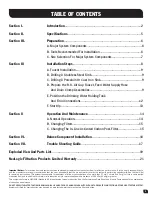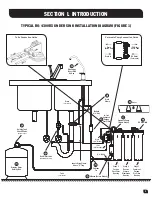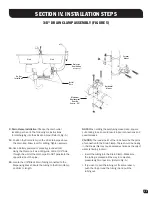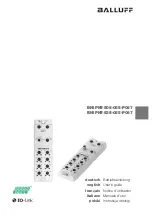
C. SITE SELECTION FOR MAJOR SYSTEM COMPONENTS
The R.O. System was designed to fit under a sink, however, because of space limitations or other reasons,
the system’s flexible design allows for other locations. When determining the location remember that access
to a cold water tap line, the household drain, and ease of filter replacement are important considerations.
All components and tubing should be located in an area which is not exposed to freezing temperatures.
If winter temperatures are severe, the area should be above the minimum temperature listed in
Table B, page 5 for proper performance. Do not expose unit or tubing to direct sunlight.
SECTION III. PREPARATION
7
1. Dispensing Faucet:
The faucet should be placed near the sink where drinking water is normally obtained.
Convenience of use (filling of water pitchers and glasses), and an open area beneath
the faucet under the sink for attaching product and drain tubing are considerations.
4. Feed Water Connection:
The Feed Water Valve should be located as close to the manifold assembly as possible.
USE A POTABLE COLD WATER SUPPLY ONLY. Softened water is preferred as it will extend
the life of the R.O. Membrane.
3. R.O. Manifold Assembly:
The manifold can be installed on either the right or left side of the under–sink area
or a cabinet. The right side is recommended because all the tubing will be to the back
of the cabinet and out of the way.
Installation in the basement is also an option, one location is near the laundry/utility sink
where cold potable water and drain access is handy. The mounting location should allow
adequate clearance and accessibility for cartridge changes.
2. Drinking Water Holding Tank:
The Holding Tank may be placed where it is convenient within 10 feet of the faucet;
under the sink or in an adjacent cabinet are the best choices. If a longer run of tubing
is required, the tubing 7 should be the 3/8" diameter OD size to prevent a high pressure
drop. Remember, these tanks can weigh up to 30 pounds when full of water; a firm,
level area is required.
5. Drain Connection:
The waste water must go to drain through an anti–siphon air gap. The air gap is provided for in the
base of the faucet. If discharging into a utility sink or standpipe, an air gap of greater than 1" above
the flood rim must be provided. Do NOT connect the system drain line to the dishwasher drain or
near the garbage disposal. Back-pressure from these units may cause the air gap to overflow.








































